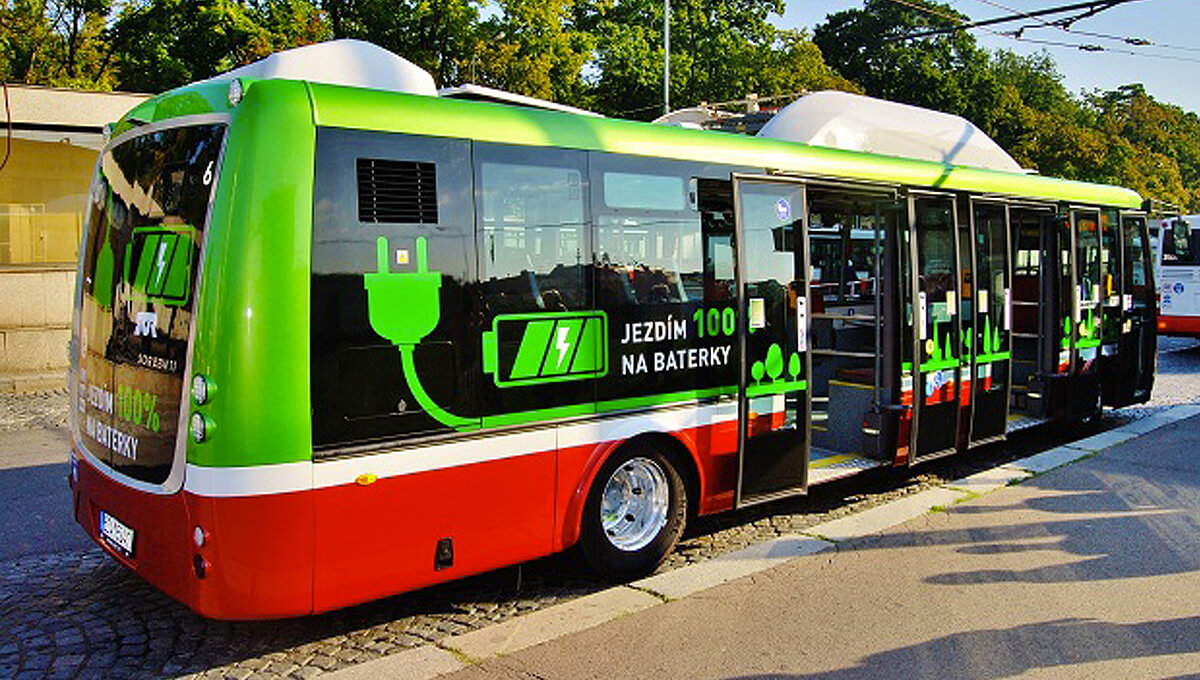
The various demonstrators installed in European cities have shown that electric buses and their charging systems are now operational. Cities will now be able to replace diesel-powered buses with electric vehicles while providing the same level of service. Prague is a case in point.
“Transport people, not batteries,” is the pithy phrase with which Nicolas Héritier, Urban Transport VP for Mobility (VINCI Energies) sums up the philosophy underpinning the electric bus tested by Mobility subsidiary Cegelec Prague, nearly two years ago in the Czech capital.
“Transport people, not batteries.” The pithy slogan sums up the electric bus philosophy tested by Cegelec Prague.
This latest-generation electric bus carries a minimum number of batteries and recharges them whenever operations allow. In Prague, the transport authority takes advantage of the bus driver’s break (about every four hours) to recharge the batteries while the bus is not operating.
The system is simple: at the terminus, the driver parks the bus in an area equipped with an overhead power line and deploys his pantograph to connect the vehicle to the power system. The batteries are recharged in four minutes. The overhead power line can be installed without major infrastructure works because power is supplied by the city’s tram system, stabilised, and channelled to the recharging lines.
Opportunity charging
Nicolas Héritier says that the demonstration project in Prague offers conclusive proof that “the technology is mature and the electric bus can provide the same services as its internal combustion counterpart.” After two years of tests, the “opportunity charging” solution (charging a little, often) will move to the industrial stage and come into wider use. Prague will announce its decision in September.
Not to be outdone, Paris transport operator RATP announced in March 2017 that it would be working with Alstom to test an “opportunity charging” solution on two bus lines (Gare Saint-Lazare – Porte de Gentilly and Eglise de Pantin – Sevran Avenue Ronsard) under real operating conditions, for a period of six months.
Customisation
Other cities also hope to accelerate the transition to carbon-free transport (see insert). Again in France Pau, Nantes, and Amiens have issued calls for tender on which Mobility has submitted bids. “The equation is different for every city and every line. The solution will depend on the characteristics of the line, the climate, the size of the buses and of course the way in which they are operated, among other things” says Nicolas Héritier, stressing the need to “provide cities with customised solutions.” Where a charging system like the one in Prague cannot be installed at the terminus, buses should have a driving range of one day, i.e. 250 to 300 kilometres, and a charging system should be made available at the depot to charge them at night.
11/09/2017




